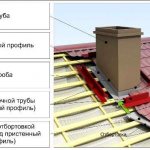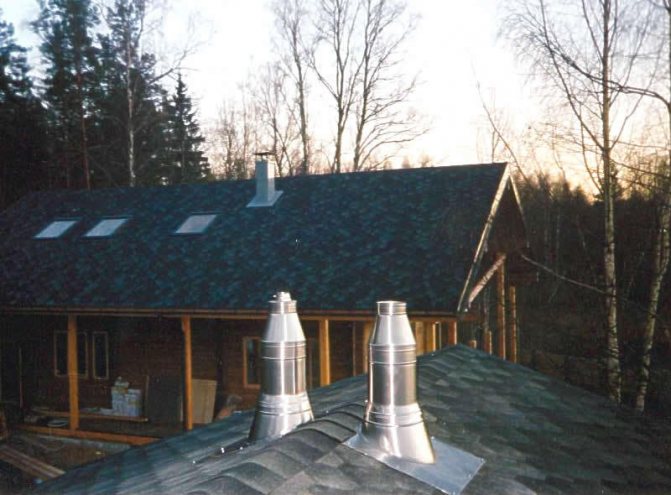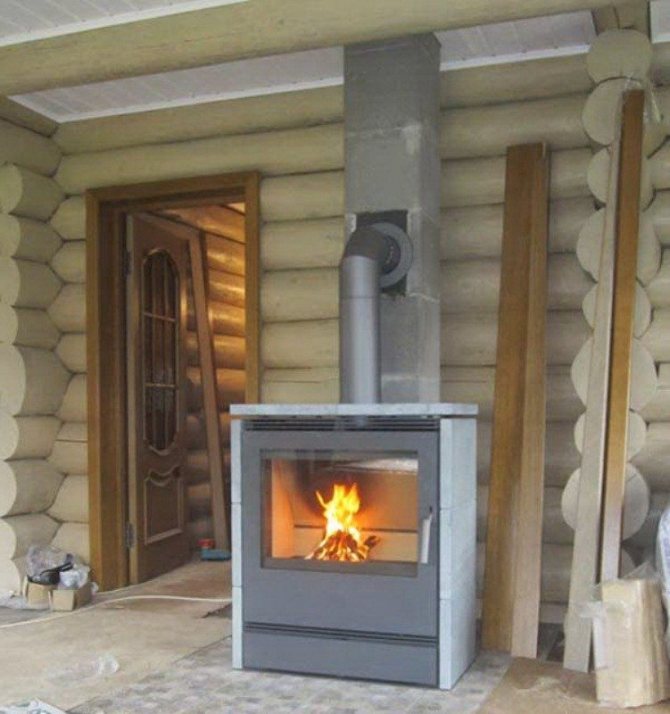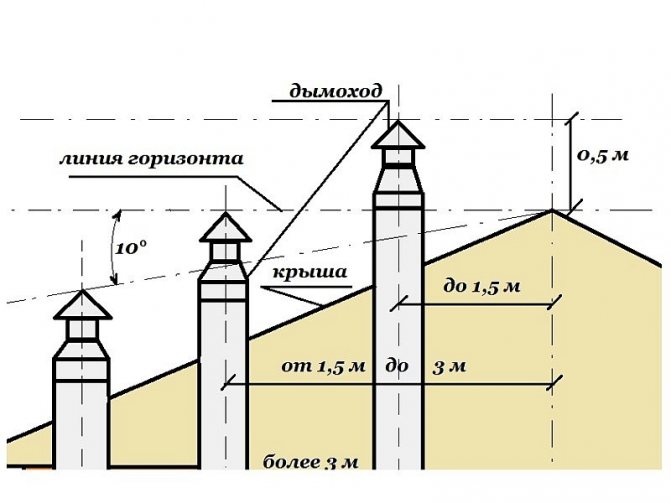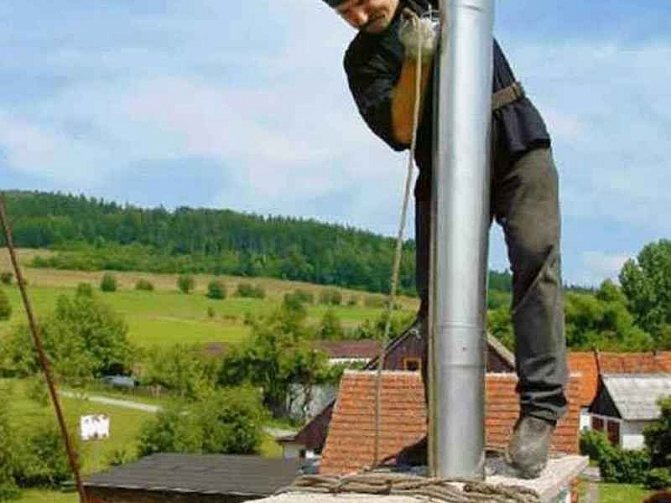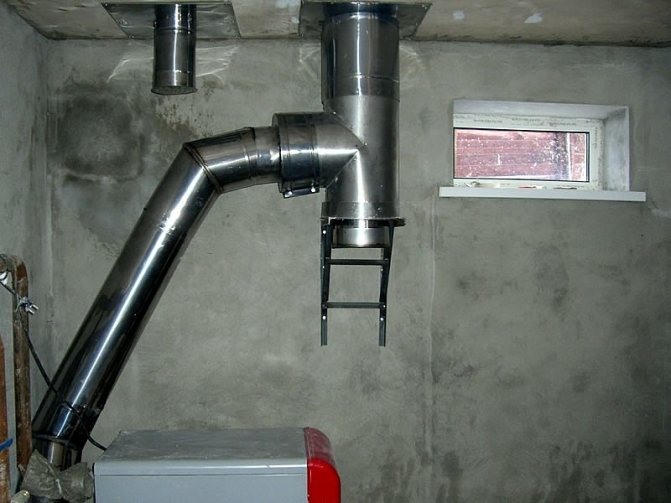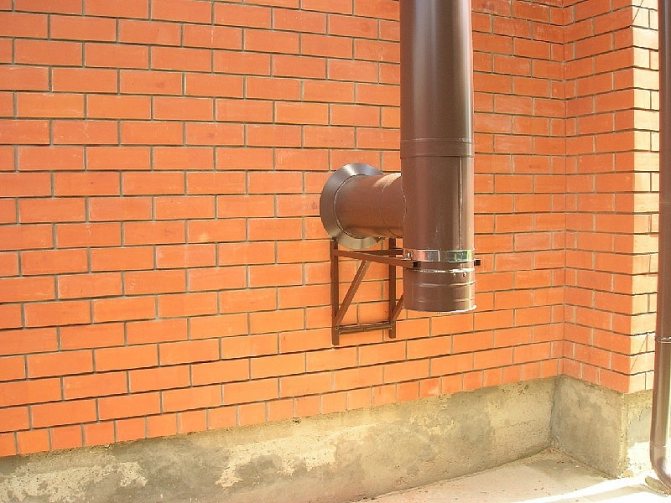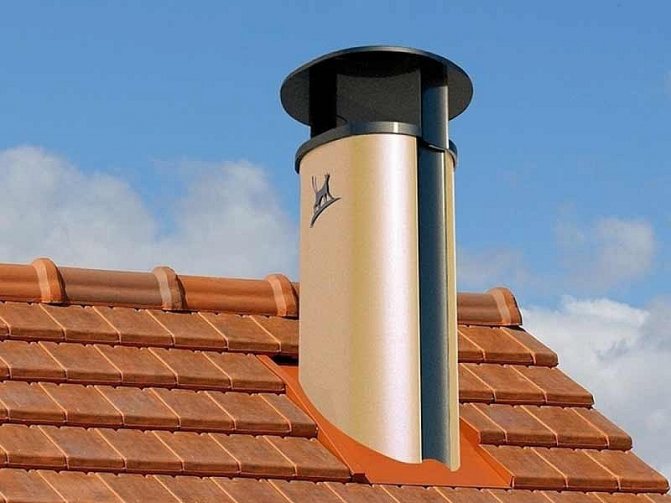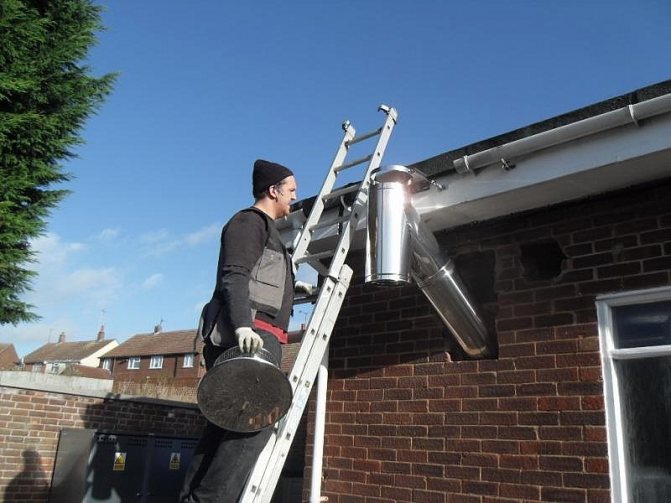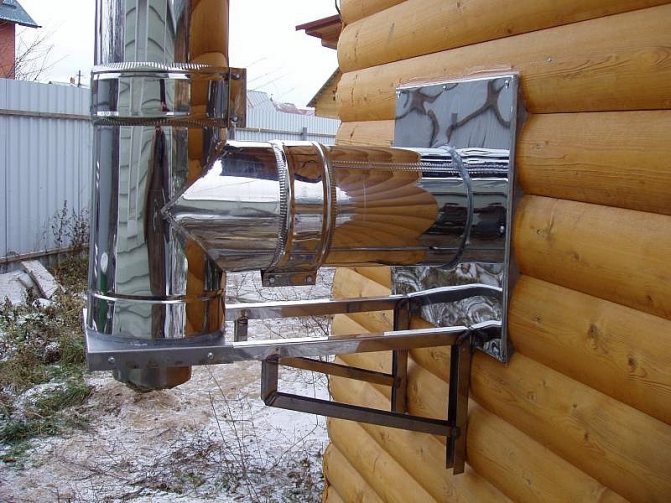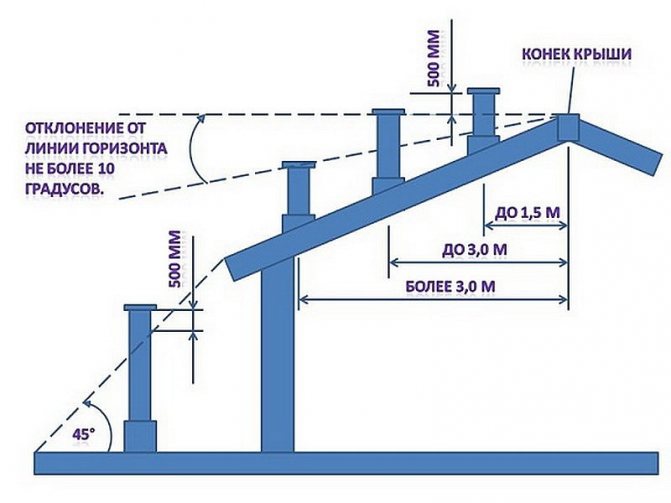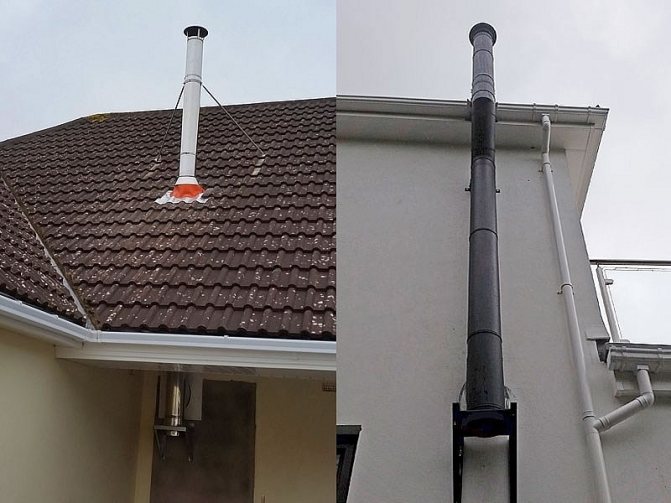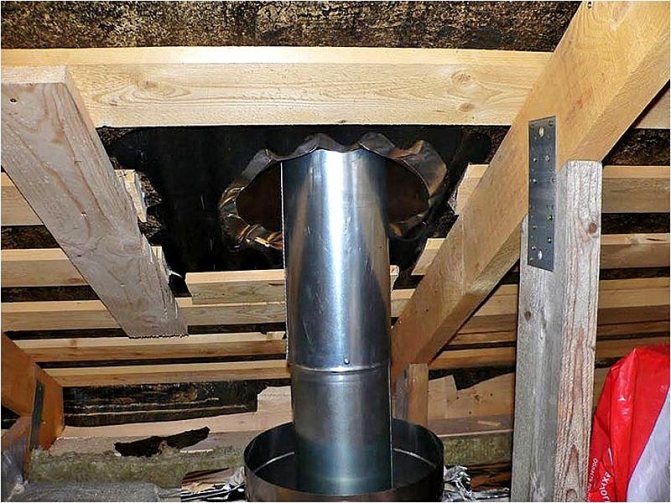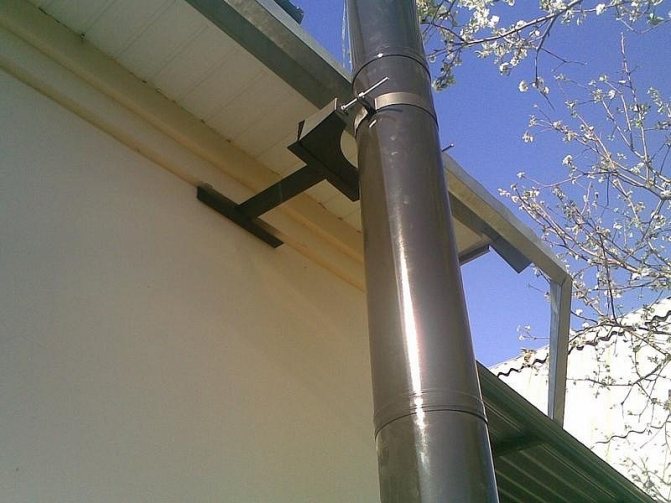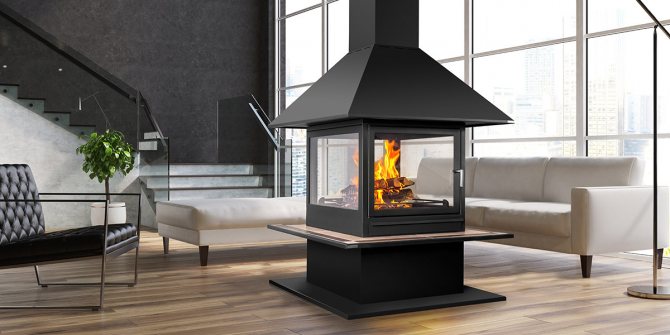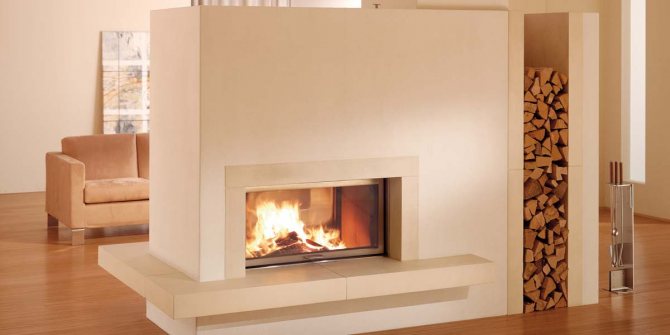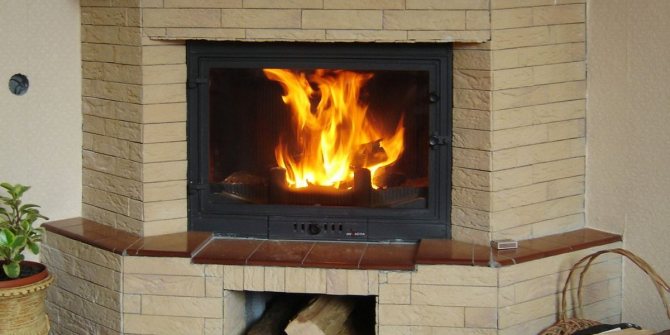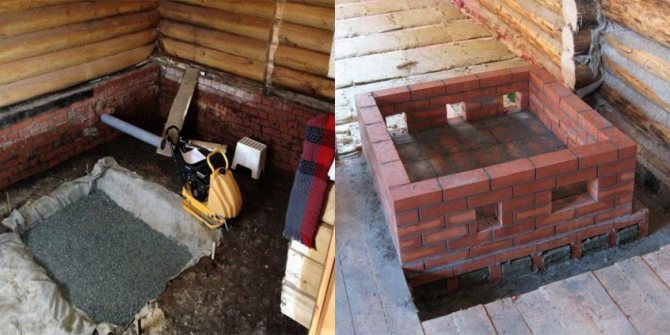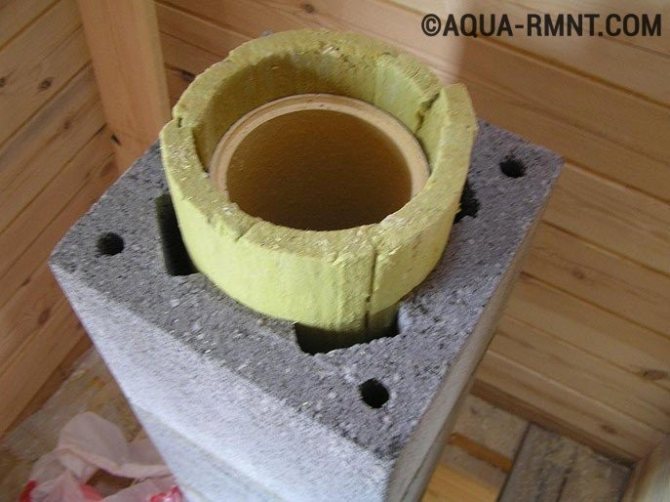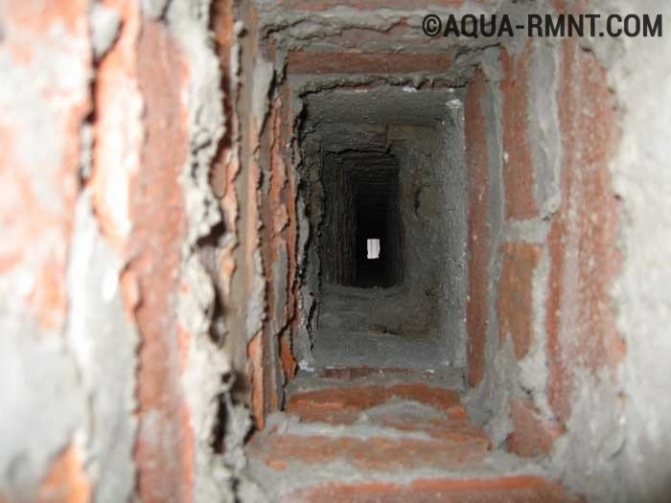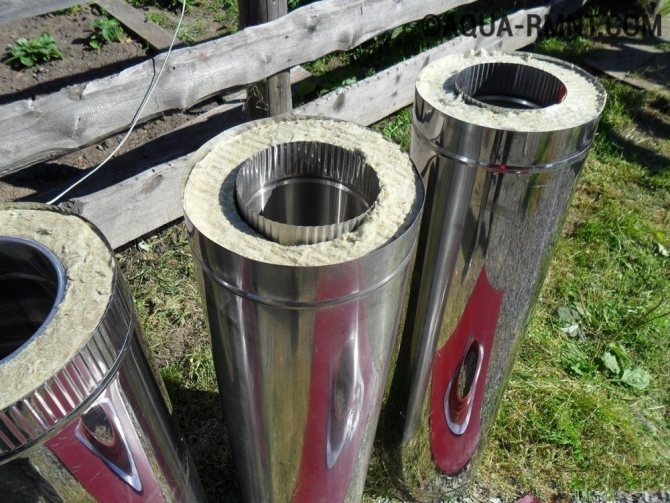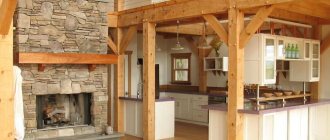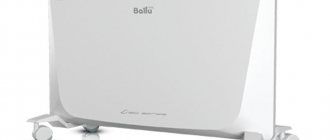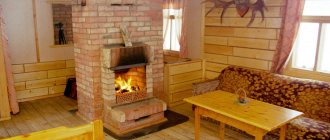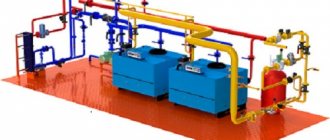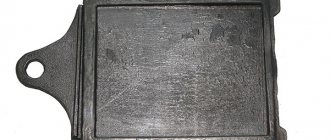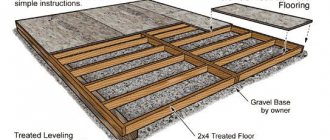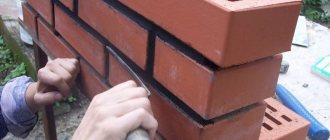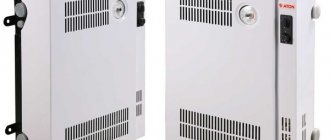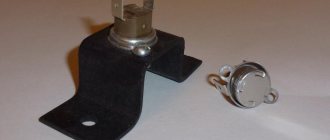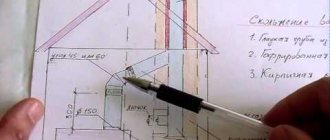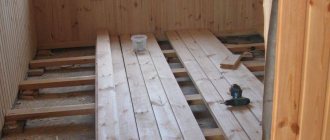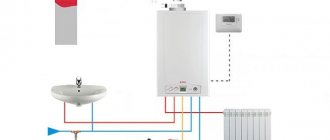Features of the chimney device
The device of the fireplace provides for a chimney made according to an individual design solution. The vertical channel for it must be at least 5 meters high, starting from the grate and ending with a pipe hole.
Important characteristics of a smoke-evacuating structure include:
- chimney location;
- material of its manufacture;
- height and section of the chimney for the fireplace;
- thermal insulation, draft and shape of the channel mouth;
- furnace power;
- passages through ceilings and roofs;
- installation method;
- options for the location of the head with respect to the ridge, smoke and ventilation ducts inside the main shaft;
- operational features;
- the presence of problem areas.
Installation
Installation of structures is always considered on an individual basis. This is the most crucial stage, in order to install a chimney for a fireplace with your own hands, you need to calculate its diameter and location.
A suitable place for placing a fireplace chimney is considered to be a place near the roof ridge. This will make the protruding part of the pipe smaller.
The height must be at least 4 meters. The calculation of the maximum values depends on your building.
Calculation of the pipe diameter will also be required in order for the structure to go through all the overlaps without difficulty.
Special attention is always paid to the installation of equipment in wooden buildings. Such buildings are most susceptible to fires. In order to avoid this, it is necessary to use a transition pipe, which will not only protect against fires, but also provide high-quality insulation between the roof and the chimney of the fireplace.
In order to make a hole in the roof, you must remember that its size should be slightly larger than the diameter of the pipe.
In addition, you need to pay attention to possible joints. They can not only reduce the efficiency of the heater, but also worsen the safety parameters. In addition, the service life will be significantly reduced.
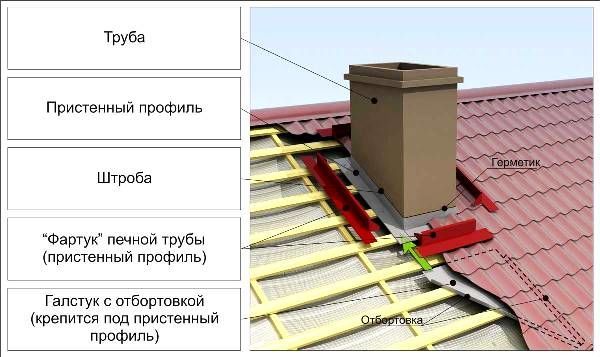
Sectional view of the chimney pipe on the roof
The most difficult stage of installation is considered to be the place of passage through the roof. The main parameters that you need to pay attention to are quality and safety.
Each design has a basic set of requirements that need to be addressed.
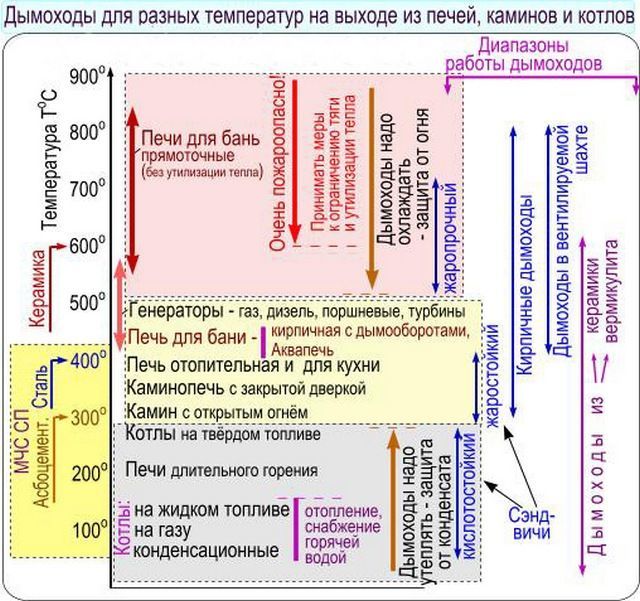

Diagram of the dependence of the type of heater, temperature in the chimney and the material of its manufacture
For example, for a brick building, the work scheme looks like this:
- Foundation.
- Solution.
- Masonry.
- Mop.
- Head.
- Smokebox.
For a ceramic device, the work scheme is as follows:
- foundation,
- Fixing modular elements.
The construction and installation of chimneys for fireplaces is carried out taking into account the expansion of the material under the influence of heat. In addition, it is necessary to take care of the tightness of the equipment during operation.
A properly equipped chimney will last long enough.
Chimney materials
The installation of a fireplace and the installation of a chimney largely depend on the materials of their manufacture, each of which has certain properties:
- ceramics are resistant to high temperatures, are characterized by heat capacity and durability, but their cost is the most expensive;
- stainless steel is easy to install, lightweight, resistant to acids;
- brick is characterized by durability and heat capacity, but it has a lot of weight;
- It is allowed to use asbestos-cement pipes only when the temperature of the flue gases going outside does not exceed 300 degrees.
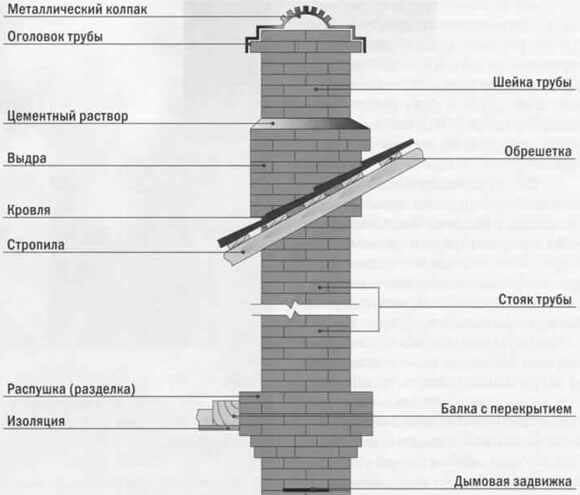

Design features and principle of operation
The chimney for the fireplace is a vertical structure based on a round pipe, which is connected to the outlet of the fireplace insert and goes out through the roof.
The work of the chimney is based on the thrust force, which arises from the pressure difference in the upper and lower parts of the structure. At the top of the chimney above the roof surface, the air is more rarefied, which creates a low pressure area. As a result, the exhaust gases naturally flow out of the chimney to the outside.
The design features of the fireplace chimney depend on the type of stove equipment. A modern indoor fireplace is not necessarily a niche in the wall of the house. It can be a free-standing open or closed type stove that runs on wood, coal, peat and even fuel briquettes. The chimney device depends on the size of the fireplace, its location and design.
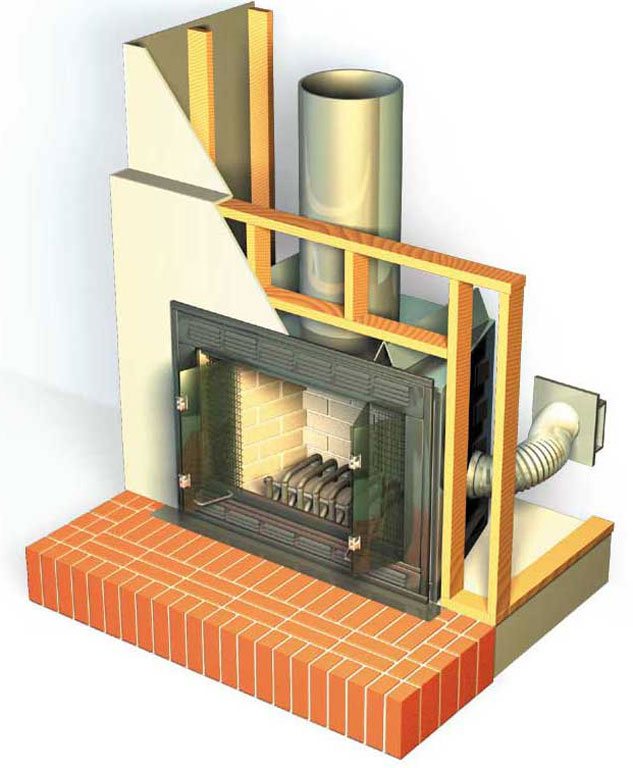

It is important! A common feature of the chimney of all fireplaces is contact with hot air and combustion products, which requires special fire-resistant properties and resistance to aggressive influences from the chimney material.
The main parameters and characteristics of the chimney
Wall thickness
... If the brick is of standard dimensions, then ceramic pipes with walls of 8 mm thick will be sufficient. For chimneys made of stainless steel, their thickness should be 1 millimeter. Often for the chimneys of stove-stoves, "black" pipes made of 2 mm heat-resistant steel are used.
Channel height
... The chimney draft, which means its functionality, directly depends on the height of the chimney. The larger this parameter, the stronger the efficiency of the fireplace. Experts have determined that the height of the chimney cannot be less than a 5-meter mark, otherwise difficulties arise when lighting the fireplace, and when firewood is burning, smoke or back draft may be created. At the same time, at a very high channel height, the fuel burns out too quickly, which reduces the heat transfer of the fireplace.
This parameter should be determined during the design process, taking into account:
- dimensions of the firebox;
- cross-sectional area;
- furnace power;
- the height and location of the pipe head relative to the roof ridge.
Diameter
... For the efficiency of the structure, the cross-sectional area is of great importance in the case when the channel is rectangular. If the cross-section is round, the diameter of the chimney for the fireplace is important, it should be equal to the diameter of the outlet of the firebox. When choosing this parameter, the type of firebox is taken into account. See also: "Installation of a fireplace insert, cladding and installation of an open and closed insert."
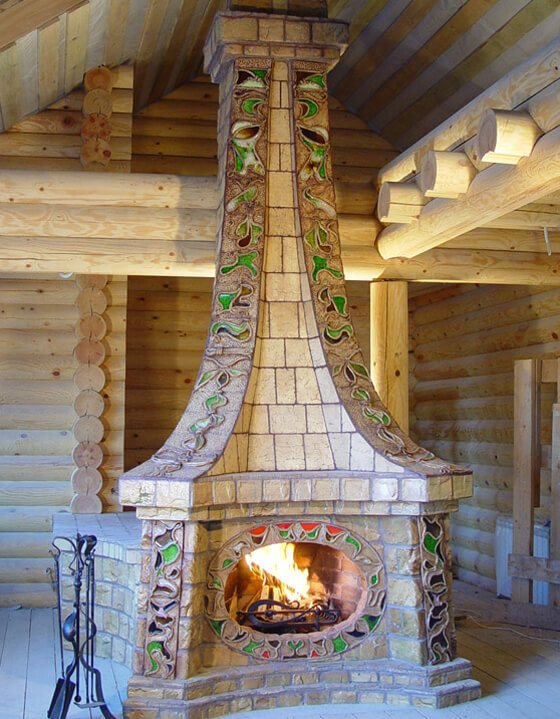

Sectional shape.
The draft in the chimney depends on it. It is believed that round pipes have the best dynamic performance. Less soot collects on the walls of rectangular and square chimneys.
Inner surface of the channel
... It should be free of cracks, irregularities and, if possible, without roughness, due to these defects in the chimney, the draft is reduced.
Channel location. Chimneys are:
- mounted, they are mounted above the fireplace, they are its continuation;
- indigenous or free-standing - the chimney channel is located on the side of the fireplace, as in the photo, it is installed vertically, which requires a separate foundation;
- wall - the channel is located in the wall of the building.
In relation to the building, the chimney pipes can be located outside or inside.
Providing traction
... The main purpose of the fireplace chimney is to ensure the efficient removal of combustion products from the combustion chamber. What is traction for?If it is absent, the fireplace cannot be used. Depending on the mode of operation of the structure, air flows and flue gases create a certain direction, pressure and intensity of movement.
If the fireplace does not work, natural draft is generated in the chimney. In the case of reverse draft, gases and air are directed into the room, rather than being discharged outside. When it is insufficient, the fireplace smokes heavily (read: "From what and why the stove smokes - we find out the reasons, we look for solutions, what to do"). Strong draft requires more firewood, while the heat dissipation of the structure decreases as heat leaves the house through the chimney.
Headroom height above the roof. There are certain building codes according to which the head must rise:
- above a flat roof at a distance of at least 50 centimeters;
- when the pipe is located no further than 1.5 meters from the ridge - at least 50 centimeters above it;
- when the pipe is at a distance of 1.5-3 meters from the ridge - not lower than it;
- if the pipe is located at a distance of more than 3 meters from the ridge - above the line drawn at an angle of 10 degrees down to the horizon from the ridge.
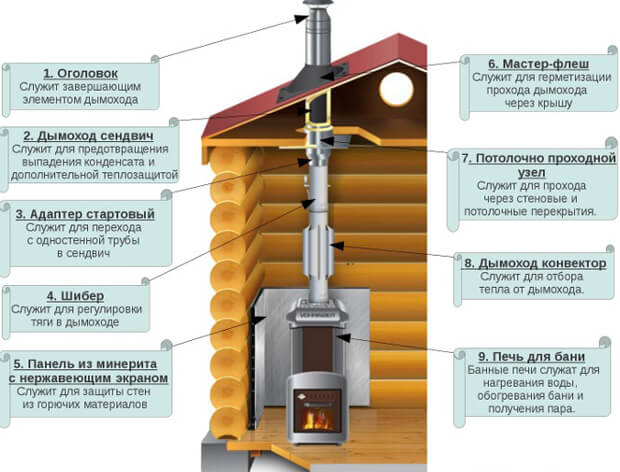

The end of the chimney
... A controversial point for professionals and home owners. If the channel is through, rain and snow can easily enter it, although the escape of gases is facilitated. Atmospheric precipitation will not be able to penetrate the pipe, but the thrust decreases and condensate forms intensively. A weather vane, a deflector and a smoke exhauster for a fireplace at the head of the chimney only revive the shortcomings of the fireplace design. You can make a smoke exhauster with your own hands, which will save money.
Outdoor decoration
... For lining the chimney, materials are used that are resistant to precipitation and other natural phenomena. In the cold season, they must withstand constant freezing and thawing.
Thermal insulation
... It is necessary to reduce the formation of condensate in the chimney duct and prevent a fire from occurring if there are easily combustible objects nearby. When the thermal insulation of the chimney is made in accordance with the requirements, the required draft will be provided in the structure, and the flue gases will not cool down prematurely, due to which condensation does not appear.
Lifetime
... This indicator depends on how professionally the installation of fireplaces and chimneys is performed and on the conditions of their work, including timely maintenance. Of no small importance is the type of fuel used and the quality of the materials from which the main parts of the structure are made. In fact, the durability of their products declared by manufacturers is very different (about
Variety of designs
There are many designs of chimneys for a fireplace, which can be divided according to location and installation method, or material.
Depending on the location and installation method, fireplace pipes can be:
- Built-in. This is a vertical shaft for removing combustion products from the furnace. In addition, devices of this type are considered the most economical.
- Suspended. A chimney for this type of fireplace is installed in a finished room. It is mainly used for island-type outbreaks. The chimney is fixed to the supporting structures of the roof and ceiling slabs. To avoid trouble, metal models are chosen as suspended fireplace chimneys. This is due to its relatively light weight compared to other models.
- Devices based on the hearth. Chimneys of fireplaces of this type are installed on their own foundation, since the weight of the finished product is quite large.
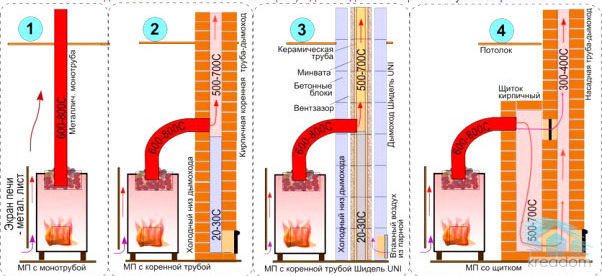

Examples of the device of metal and brick chimneys
Various materials can be used in the production of chimneys for a fireplace. Based on this, several varieties can be distinguished:
Brick pipe
Such a structure can be made by hand, several types of bricks are used as a material: corpulent, burnt and clay bricks. The construction of brick chimneys for a fireplace is considered quite effective. Brick chimney is more suitable for fireplaces using solid fuels.
Brickwork has proven itself well at high combustion temperatures. In this case, condensation is not possible. Burning damp firewood is more harmful.
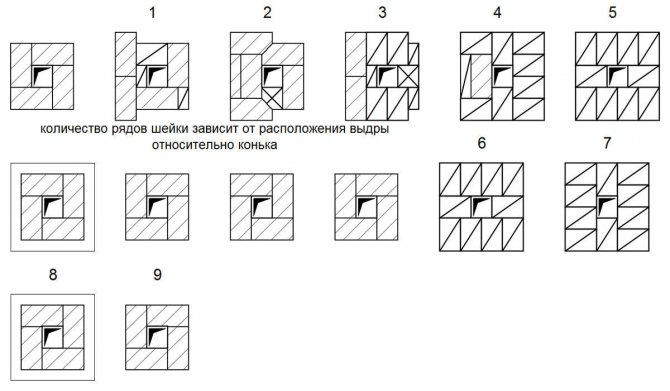

Brick otter ordering otter
The brick chimney must have a solid masonry. To prevent the formation of condensation, a brick pipe is finished with a metal liner.
Of steel pipes
The chimney for fireplaces of this type is made of stainless steel, which has heat-resistant properties. This type of pipe is much lighter than the brick version. Steel chimneys of fireplaces are quite durable. They are resistant to corrosion and are used for various types of hearths. The round section of the steel pipes prevents soot formation.
But, despite all the pros, there are also disadvantages:
- High price.
- Small self-supporting capacity.
Such pipes can be produced in several versions:
- Sandwich. They are a steel pipe with a circular cross section, and a special layer of thermal insulation, which is located inside.
- "Hot" pipes. Such pipes imply a steel structure without an insulating layer.
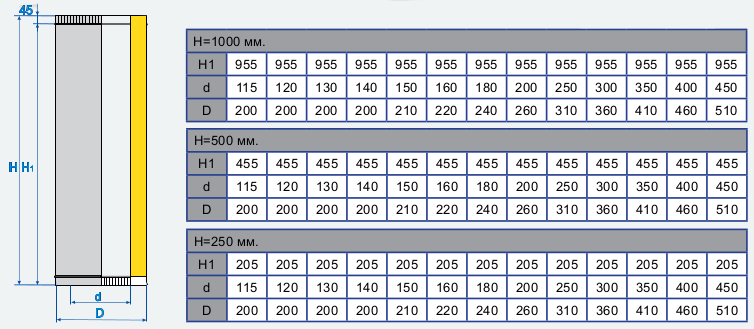

Chimney dimensions
Chimney insulation
From ceramic pipes
The chimney for fireplaces of this type is quite expensive, but the long service life pays for all the costs.
Glass constructions.
The advantages of chimneys for a fireplace are the absence of corrosion, low rates of thermal inertness and absolute immunity to moisture.
The disadvantages include:
- High price;
- Expensive installation.
Chimney installation
For each chimney, the order of installation, assembly and fastening is decided individually:
- when building a brick smoke exhaust structure, a foundation is required, observing the correct location of the rows of masonry. The composition of the solution is important, a mop, a head and sometimes a chimney are necessary;
- for a ceramic chimney, a foundation is needed, reliable fastening of modular elements. When connecting, you will need a revision with a tee;
- the installation of a stainless steel chimney needs fasteners and brackets, bends are used to ensure the deviation of the channel from the vertical. The device of passages going through the ceilings and the roof is being carried out; a head and a chimney are also needed.
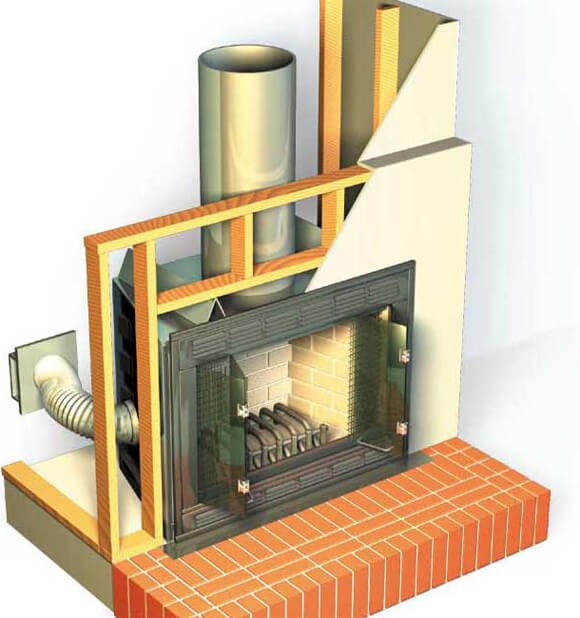

During construction, when deciding how to make a chimney for a fireplace, one should not forget about the thermal expansion of materials that occurs during operation.
It is necessary to carry out the installation so that the tightness of the smoke exhaust channel cannot be broken and fire safety is ensured.
Brick construction device
Before starting the construction of chimneys for fireplaces, it is necessary to deal with the brick structure. It is based on the following elements:
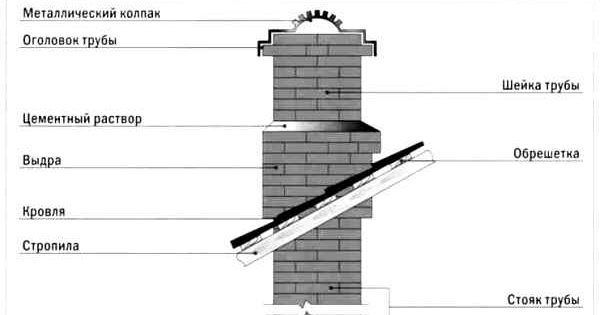

Brick chimney
- Attachment pipe.
- Fluffing.
- Riser.
- Otter.
- Neck.
The shape of the device can be rectangular, round or square. But it should be noted that round shapes are more appropriate for use.
For those who find the chimney arrangement for the fireplace very complicated, you can choose simpler options. To simplify the process, you can use ceramic or stainless steel devices.
Chimney safety
The desire of the owners to install a fireplace structure in their household is quite understandable, but at the same time they should not forget about the danger posed by fireplaces with smoke. Chimneys made unprofessionally pose a huge threat, which can end very sadly - carbon monoxide poisoning or fire.
If several fireplaces are installed in the house, each of them needs a separate channel or chimney. Some owners, in order to save money, connect two devices to one chimney, and this is strictly prohibited by building codes.
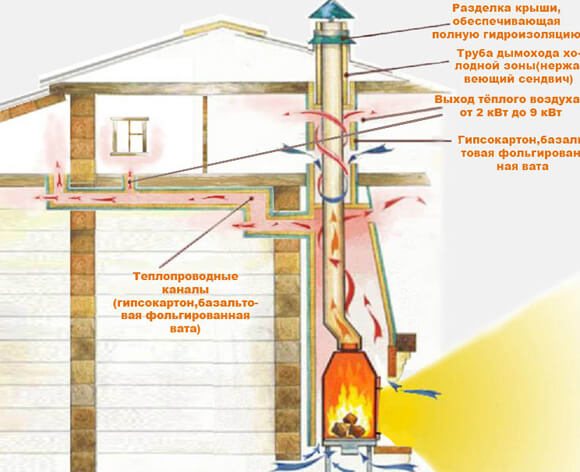

How to build a chimney for a fireplace
Fireplace chimney on the side of the house
The first rule to remember is that you cannot make a fireplace chimney on the facade of the house. Many designers, having seen enough pictures in foreign magazines, transfer their traditions to our climatic conditions, or rather the construction of a chimney outside the house. The chimney for the fireplace should be indoors and kept warm at all times.
Our ancestors were wise people. That is why you will not see in Russia that the chimney for the fireplace is located in the outer wall of the house. More precisely, you can find it, but these chimneys will definitely have one important condition - the thickness of the brickwork from such a chimney to the street will be at least 64 centimeters, which is two and a half bricks. In Russia, it was believed that with such a wall thickness, the chimney would not freeze and would not give back draft.
Chimney inspection and cleaning
According to the rules for the operation of chimneys for fireplaces, they must be periodically examined and made technical inspection. This work is carried out by specialists in order to check the performance of the smoke exhaust system. Cleaning chimney fireplaces involves removing impurities from the ducts. To ensure fire safety, the tightness of the structure, the accumulation of soot in it, the level of pipe destruction are checked (read: "How to clean the chimney - means and proven methods, prevention").
When carrying out a technical inspection of the chimney, a check is made for the presence of traction, accumulations of soot, the tightness of the channels, the condition of the head. Particular attention, which is required by the chimney ducts, is due to the fact that they are considered fire hazardous sources. For this reason, increased requirements are imposed on them.
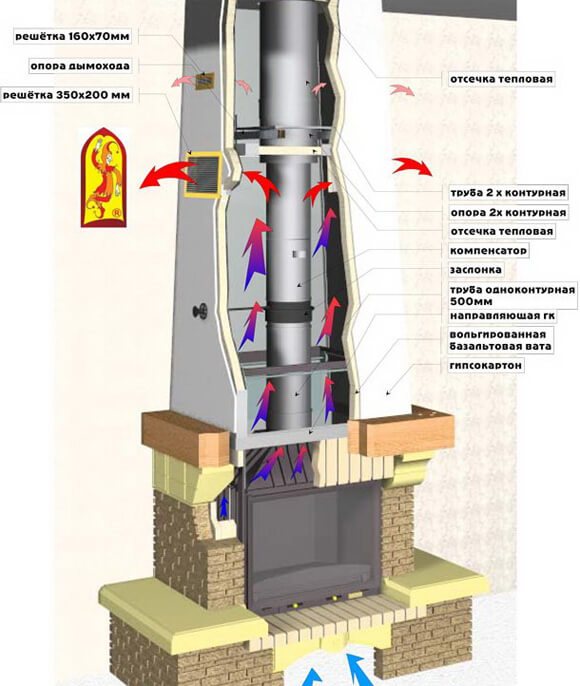

Carrying out regular cleaning of the chimney, elimination of dirt in the ventilation ducts and the blockages formed in them helps to prevent the occurrence of unpleasant consequences, maintain a home fireplace in proper condition and significantly extend its life.
How to build a fireplace
In general, there are quite a few rules for building a fireplace and there is no point in listing everything in one article. If you follow at least the main of these rules, then in the future it will help to avoid troubles associated with the operation of the fireplace.
The fact is that a fireplace cannot be brought home just like a wardrobe or stove, put in a prepared place and use it. A fireplace needs conditions. The fact is that a fireplace is a set of rigid proportions and sizes that are interconnected and interdependent. Therefore, if we accept by default that in this part the stove-maker has kept all the proportions, then we can proceed to those moments that can interfere with the normal operation of even a correctly folded or mounted fireplace.
Can't use a chimney sandwich
To prevent the draft from overturning during the cold period, do not use the "sandwich" as a chimney for the fireplace. If you use it as a fire safety element when passing inside the house, then, at least, do not bring the "sandwich" above the roof, leave it warm, within the house, and make the street part of the chimney of brick with a cross-section as close as possible to the inner diameter ...
If this is not possible, do as our ancestors do. They made the chimney pipe ceramic and poured it (coated it) along the contour with heat-absorbing material, in particular, lime mortar.
In order to minimize the risk of draft overturning as much as possible, the chimney must very slowly release the heat that it has accumulated. That is, it must have a large thermal inertia."Sandwich" does not have such a quality, and therefore cannot be considered a "warm" pipe.
The larger the fireplace, the larger the chimney for the fireplace
The fifth rule. The larger the fireplace, the larger the chimney for the fireplace. The larger the chimney for the fireplace, the greater the chances that difficulties may arise with it. The large chimney for the fireplace removes quite an impressive amount of air during operation. This means that exactly the same amount of air must be replaced, i.e. submit to the premises.
In the warm season, this is not a problem, you can just open the window. But in winter, this trick will not work, you can get the strongest draft. Therefore, the inflow for the fireplace is the most important component of its normal functioning. The inflow can be made general or local, that is, fed into the rooms, or directly into the fireplace.
Fireplace chimney damper
As we have already found out, the "sandwich" does not generate heat. It only acts as a "fur coat" that keeps warm. But for this it is necessary that warm air constantly circulates through the chimney. The diameter of the chimney section depends on the size of the firebox. Usually it is 180 mm., 200 mm ..
Sometimes chimneys and larger ones come across. In any case, even the smallest chimney for a fireplace is quite impressive channels through which a decent amount of heat can escape. I think that you will agree with me that it is very unreasonable in the cold season to literally throw out precious warmth on the street. And if so, then on the chimney, in case of downtime of the fireplace, a valve (gate) is provided. That is, when the valve is closed, the heat does not go into the chimney, while the "sandwich" instantly cools down.
The stock fireplace damper cannot heat the chimney
But that's not all. In the finished fireplace inserts there is a standard valve, which the fireplace manufacturer deliberately makes loose, with slots. The air that goes into the chimney through these non-densities in the standard valve is sorely lacking to warm up the "sandwich". The metal pipe cools down very quickly and the draft in it overturns. Metal has very little thermal inertia and is therefore unable to retain heat for a long time under the influence of cold outside air.
In addition, due to the constantly entering warm air in the iron pipe, condensate forms, which, when combined with the combustion products deposited in the pipe, forms an acid that can completely destroy the metal pipe. Because of this, in my dacha, a rather thick metal pipe, extending from the stove, rusted.

